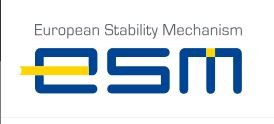Nearly 23,700 workers dismissed due to economic crisis and major structural changes in world trade patterns were helped by the European Globalisation Adjustment Fund (EGF) last year, according to a report adopted on 22 August by the European Commission more than double the number of workers helped by the Fund in 2009. The EUR 83.5 million paid out by the EU’s Globalisation Fund to nine Member States are intended to help the national authorities as they support dismissed workers in finding new job opportunities.
Advertisement
Why does the Commission present an annual report on the EGF?
The EGF Regulation which set up the Fund requires an annual report on the EGF. The fourth annual report describes the activities of the EGF during 2010 and it also describes the outcomes of four EGF contributions granted in previous years and how it complements actions funded by other EU funds.
What are the objectives of the EGF?
The EGF, an initiative first proposed by President Barroso to provide help for people who lose their jobs due to the impact of globalisation, was established by the European Parliament and the Council at the end of 2006.
It was designed as a means of reconciling the overall long-term benefits of open trade in terms of growth and employment with the short-term adverse effects which globalisation may have, particularly on the employment of the most vulnerable and lowest-skilled workers. In June 2009, the EGF rules were revised to strengthen the role of the EGF as a crisis intervention instrument forming part of Europe’s response to the financial and economic crisis.
As part of its proposal for the next Multi-annual Financial Framework beyond 2013, the Commission has proposed that the EU should continue to express solidarity with redundant workers and the affected regions through the EGF also in the future.
How does the Fund work and what will happen to the EGF in the future?
The maximum amount available through the EGF is currently 500 million per year. This is financed through under-spending against the other budget ceilings, and from Community Funds that have been de-committed.
Each deployment of the Fund, as well as the amount deemed necessary for each application, is decided by the budgetary authority i.e. the Council and the European Parliament – following a Commission proposal.
In 2009, the Commission extended the scope of the Fund to include, in addition to workers who lost their job due to the economic and financial crisis. The derogation on grounds of the global financial and economic crisis was due to expire at the end of 2011. Because the negative employment effects of the crisis have continued longer than initially expected, the Commission recently proposed the extension of this criterion until the end of 2013.
For the next financial framework, post-2013, the Commission has proposed that 3bn be available to support workers in all sectors who lose their jobs in the wake of globalisation and serious crises. As an expression of EU solidarity with redundant workers, the EU will continue to assist the Member States through the EGF until 2020 in providing tailor-made support for workers made redundant as a result of major structural changes due to the increasing globalisation of production and trade patterns. The EGF will address large-scale redundancies resulting from a serious disruption of the local, regional or national economy caused by unforeseen crises as well as the indirect effects of globalisation on the agricultural sector, requiring transitory support to farmers to facilitate their adaptation.
Who qualifies for EGF support?
The EGF is for workers, not for companies. It aims to complement the support provided by the Member States and companies concerned in favour of redundant workers who are actively looking for work. Member States must make an application for funding and must fulfil the criteria as set out in the EGF regulation The EGF will only fund active employment measures to keep people in employment such as counselling, training and business creation, but not passive social protection measures such as retirement pensions or unemployment benefits, which are the competence of the Member States. The EGF currently covers up to 65% of the overall costs of support, the other half being the responsibility of the Member State.
What has the EGF achieved since its launch?
The EGF contributions aim to co-finance active labour market policy measures proposed and organised for the workers by the Member States. Since the start of its operations in January 2007 up to 31 July 2011, the Commission has received 78 applications for assistance from the EGF, from 19 Member States and for a total amount of almost 358 million, intended to help nearly 76,000 workers.
25 applications were submitted for workers dismissed because of changes in world trade patterns due to globalisation, and 53 applications were submitted to help workers who lost their jobs as a result of the financial and economic crisis.
In terms of the EGF amount requested, the applications submitted under the crisis derogation represent more than 65% of the total over the entire period, and in terms of workers targeted for assistance, this type of application represents more than 63%.
EGF applications are being presented by more and more Member States and across a growing number of sectors (25 sectors as of end July 2011). The sectors concerned are first and foremost the car industry, with more than 18 000 workers targeted, followed by textiles (more than 11 000 targeted workers) and the building and construction sector (more than 10 000 targeted workers).
The outcomes of four EGF contributions granted in previous years, as reported in 2010 by three Member States (Spain, Portugal and Germany), show that the EGF gave Member States the opportunity to act more effectively in the regions affected by redundancies – in terms of the number of people assisted and the duration, type and quality of support – than would have been possible without EGF funding. The EGF support thus provided valuable help to the redundant workers to find new jobs and to improve their chances on the employment market.
The report covers 2010. What can we say about that year specifically?
In 2010, the Commission received 31 applications for EGF support – one more than in 2009. These were submitted by 12 Member States for a total of 169 994 542 in EGF support to target 31 995 redundant workers in 16 sectors. Three Member States applied for the first time in 2010: the Czech Republic, Poland and Slovenia.
In terms of paying out funding, the European Parliament and the Council of the European Union, the EU’s budgetary authority, took 31 decisions in 2010 to deploy the EGF funding (13 of these were in response to applications made in 2010 and 18 concerned applications from the second half of 2009). These contributions targeted nearly 23 700 workers dismissed in nine Member States (Denmark, Germany, Ireland, Lithuania, Netherlands, Poland, Portugal, Slovenia, Spain). This steep rise reflects the sudden impact of the global financial and economic crisis leading to a dramatic increase in applications in 2009. The 83.5 million paid out represent a 60 % increase in terms of EGF co-financing compared with 2009.
In 2010, what kind of measures have been taken to help workers made redundant?
The measures included intensive, personalised job-search assistance, various types of vocational training, up-skilling and retraining measures, temporary incentives and allowances for the duration of the active measures, and other types of support such as business creation and public employment schemes.
The EGF is complementing the European Social Fund (ESF), which is the major EU instrument for promoting employment in the EU. Generally, the complementarity of the two Funds lies in their ability to address these issues in two different time perspectives: while the EGF provides tailor-made assistance to redundant workers in response to a specific, European-scale mass redundancy event, the ESF supports strategic, long-term goals (e.g. increasing human capital, managing change) through pre-programmed multi-annual programmes, the resources of which cannot normally be reallocated to deal with crisis situations caused by mass redundancies.
Specific examples of good complementarity between the ESF and the EGF are cases EGF/2010/011 NL/NXP Semiconductors and EGF/2010/012 NL/Noord Holland ICT, submitted by the Netherlands, EGF/2010/014 SI/Mura, submitted by Slovenia, and EGF/2010/018 DE/Heidelberger Druckmaschinen, submitted by Germany (see section 4.2.2 of the 2010 Annual Report).
Why is the reintegration rate of workers lower than in previous years?
Many factors influence the successful re-integration of workers into employment; these may vary from one Member State to another. A straight comparison of the 2010 reintegration rate with that of previous years is to over simplify. The 20% reintegration rate reported in 2010 (total four cases) compared to the 69% reintegration rate in 2008 from the final reports of three cases, was greatly influenced by the reduced job opportunities resulting from the global financial and economic crisis. The 2010 results, like 2009, are further influenced by the predominance of the textiles sector, where opportunities are particularly limited.
According to information received in 2010 from several Member States, the reintegration rates are also growing in the months following the submission of the final reports, especially in cases where workers continue to receive personalised assistance beyond the EGF period, at the Member States’ own expense or through ESF.
The mid-term evaluation of the EGF, due by the end of 2011 as required by Article 17(1)(a) of Regulation (EC) No 1927/2006, will assess the impact of the EGF in more detail.
What happens now?
The Report will be transmitted to the European Parliament and the Council, as well as, for information, to the European Economic and Social Committee, the Committee of the Regions and the social partners.
Source: European Commission







